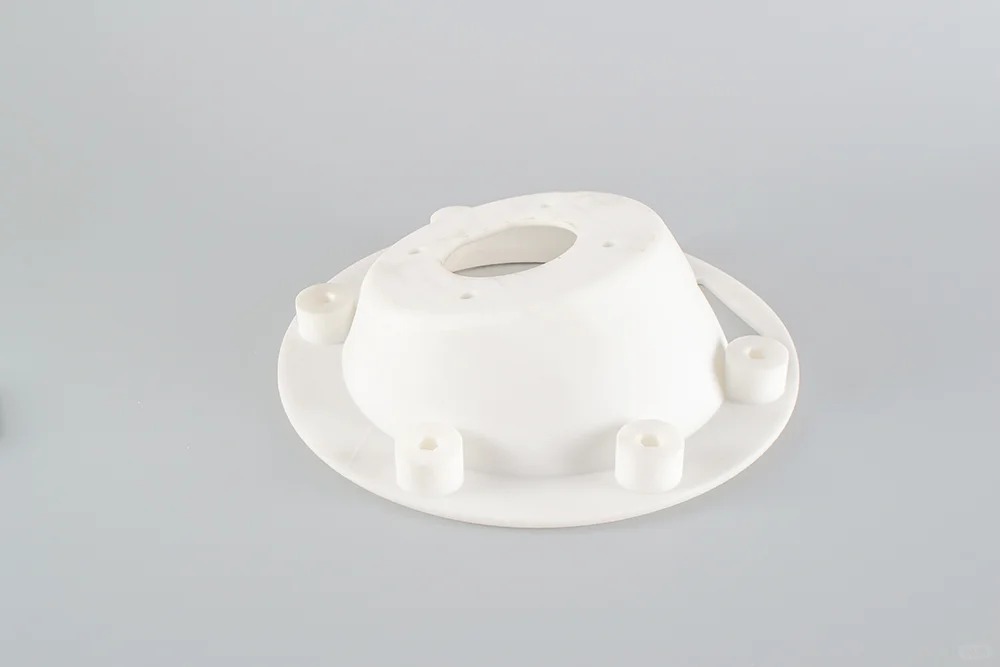From Concept to Reality: Cost-Effective Plastic 3D Printing Solutions
Introduction to Affordable 3D Printing for Prototypes and Products
Plastic 3D printing offers a fast and cost-efficient path from design validation to functional testing and low-volume production. It eliminates tooling costs, accelerates development cycles, and supports complex geometries across diverse industries.
At Neway Aerotech, our plastic 3D printing services combine material variety with optimized processes to deliver high-quality parts at a fraction of traditional manufacturing costs.
Plastic 3D Printing Technology Overview
Classification of Cost-Effective Printing Methods
Technology | Material Cost ($/kg) | Resolution (μm) | Tolerance (mm) | Key Benefits | Best Use Cases |
|---|---|---|---|---|---|
FDM | $15–$60 | 100–300 | ±0.2–0.5 | Low material cost, fast production | Prototypes, jigs, concept models |
SLA | $80–$150 | 25–100 | ±0.05–0.15 | High surface finish, moderate cost | Visual models, dental, fit checking |
SLS | $80–$120 | 80–120 | ±0.1–0.25 | No supports, functional flexibility | Snap-fits, testable enclosures |
MJF | $90–$130 | 70–100 | ±0.1–0.2 | Scalable, batch-efficient for production | Small batch functional plastic parts |
Note: Pricing and resolution vary based on part volume, geometry, and post-processing requirements.
Selection Strategy by Budget and Application
FDM: Best for low-budget iterations, education models, and mechanical testing with basic plastics like PLA and ABS.
SLA: Ideal for show models, fit-checking, and small prototypes where visual detail is critical.
SLS: Chosen for durable parts requiring flexibility, accuracy, and strength without support waste.
MJF: Suitable for short-run production where batch cost efficiency and dimensional stability are required.
Plastic Materials for Budget Printing
Material Cost vs Performance Comparison
Material | Approx. Cost ($/kg) | Strength (MPa) | Key Features | Application Examples |
|---|---|---|---|---|
PLA | ~$20 | ~60 | Easy to print, biodegradable | Drafts, display models, early prototypes |
ABS | ~$25 | ~45 | Impact-resistant, widely used | Enclosures, fixtures, small brackets |
PETG | ~$30 | ~50 | Tough, water-resistant | Containers, jigs, semi-functional test parts |
Nylon PA12 | ~$80 | ~50 | Flexible, wear-resistant | Snap-fits, end-use mechanical components |
TPU | ~$60 | ~30 | Elastic, bendable | Gaskets, seals, soft covers |
Material Selection Strategy
PLA: Preferred when visual validation and low cost matter more than strength or flexibility.
ABS: Great for structural form testing with moderate toughness and post-processing flexibility.
PETG: Balanced choice for functional testing with good strength, transparency, and chemical resistance.
Nylon PA12: Ideal for functional assemblies where flexibility, wear resistance, and accuracy are key.
TPU: Used for parts needing elasticity and impact absorption, such as grips or protectors.
Case Study: Low-Cost PETG and PLA Prototype Development for Smart Home Product
Project Background
A startup in the consumer electronics sector approached Neway to prototype the housing and internal mount for a new smart sensor device within a $300 R&D budget.
Manufacturing Work Flow
Material Selection: PLA used for exterior model; PETG for internal bracket requiring durability.
FDM Printing: All parts printed with 0.2 mm layers using budget desktop machines; infill set to 30% for balance.
Post-Processing: PLA shell lightly sanded and primed; PETG bracket holes tapped for M3 fasteners.
Fit Verification: All electronics, ports, and clips installed with tolerances held to ±0.3 mm.
Iteration Cycle: 2 design revisions completed in 4 days with total production cost under $200.
Post Process
Surface Prep: PLA front shell hand-finished and spray-coated for presentation.
Structural Adjustment: PETG bracket reinforced with 20% denser infill on second iteration.
Dimensional Check: Manual caliper measurement ensured port alignment within acceptable functional range.
Results and Verification
All prototype units assembled successfully with working electronics, ports, and mounting interfaces meeting functional tolerances.
PLA surface quality met investor presentation needs with just sanding and primer—no painting or coating needed.
Component cost averaged $6–$12 per part, keeping the entire validation process below budget and on time.
Design finalization and transition to MJF production occurred without requiring CAD modifications thanks to dimensional repeatability.
FAQs
What’s the most affordable 3D printing process for early-stage product development?
Can I print production-quality parts with budget-friendly materials like PETG or ABS?
How many iterations can I make within a $500 prototype budget?
What are the typical tolerances for FDM-printed plastic parts?
Do you offer assistance with CAD file optimization to reduce cost?

